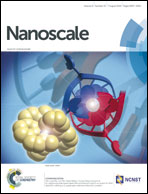From Fano-like interference to superscattering with a single metallic nanodisk
Abstract
Superscattering was theoretically proposed to significantly enhance the scattering cross-section of a subwavelength nanostructure, far exceeding its single-resonance limit by employing resonances of multiple plasmonic modes. By numerical simulation, we design a subwavelength nanodisk as a simple candidate to achieve superscattering. Due to the phase retardation, the subradiant mode can be excited and interact with the superradiant mode in both spatial and frequency domains. By changing the height and diameter of the nanodisk, we show high tunability of the mode interaction and evolution of the resulting spectral features from Fano-like resonance to superscattering. A model of two-driven coupled oscillators is proposed to quantitatively analyze the spectral evolution. We find that the evolution is caused by not only alignment of the resonant wavelengths of related plasmonic modes, but also reasonably high loss. We show that superscattering doubles the near-field intensity, potentially enhancing the signal 16 times for SERS and 4 times for SEIRS, and doubles the far-field intensity and decreases the peak linewidth, improving the figure of merit for plasmonic refractometric sensing. Our study provides quantitative physical insight into understanding superscattering and Fano-like resonances in a single nanoparticle.


 Please wait while we load your content...
Please wait while we load your content...